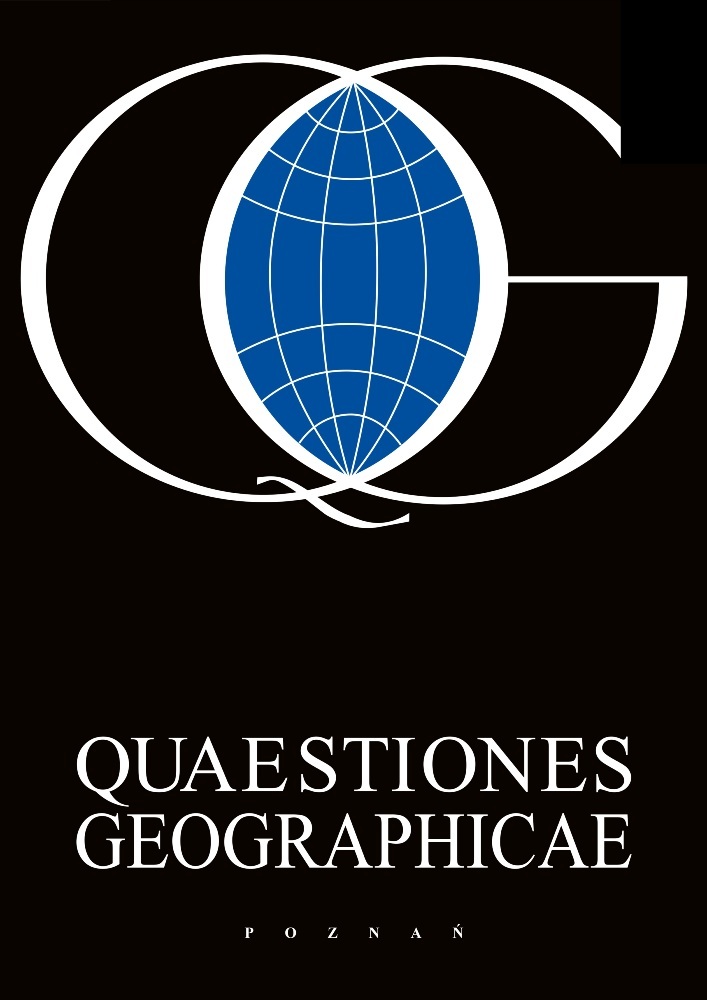Abstract
The purpose of this paper is to present selected methods of evaluation of thermal conditions in the Wielkopolski National Park and their initial characterization. The analysis was based on data from the automatic meteorological station in Jeziory measured during the period 2001-2010. The calendar of thermal classes graphically shows the variation in thermal conditions for each month and deviation from the standard adopted for the period concerned (Table 2). A good complement to the calendar seems the graphs of mean daily air temperature for months above and below the standards that enable their connection with the peculiarities of weather occurring in the area of Central Europe (Fig. 1). In addition to complete characterization of thermal conditions, specific number of days according to the average daily temperature ranges (Tavr): tavr. < 10°C, tavr. 10.1-15.0°C, tavr. 15.1-20.0°C, tavr. 20.1-25.0°C, tavr. 25.1-30.0°C and interdiurnal changes of average daily temperature (ΔTavr): Δtavr. < 2°C, Δtavr. 2.1-4.0°C, Δtavr. 4.1-6.0°C, Δtavr. >6.0°C were calculated (Table 3, 4). They were the basis for separating the year into thermal seasons (Table 5, Fig. 2). Ward’s method was used giving the best results in the case while both Tavr and ΔTavr were taken into consideration. The results obtained allow concluding that different methods of evaluation of thermal conditions applied separately do not give a full picture of thermal conditions of the area. Only a combination of results obtained using the Ward’s and calendar methods can give a complete thermal conditions characterization.
References
Bajbakova E.M, Nevraev G.A. & Cubukov L.A., 1963. Metodika analiza klimata kurortov i meteorologičeskich uslovij klimatoterapii (The methodology of the analysis of health resorts and meteorological conditions of climatotherapy). In: Očerki po klimatologii kurortov. Moskva: 5-42.
Bednorz E., Kolendowicz L., Bielec-Bąkowska Z., Bokwa A., Żelazny M., Kicińska B., Lewik P., Nowosad M. & Ustrnul Z., 2001. Regionalizacje, typologie i sezony klimatyczne z zastosowaniem analizy skupień (Regionalizations, typologies and climatic seasons with applications of cluster analysis). Przegląd Geofizyczny, 48, 1-2: 9-30.
Błażejczyk K. & Kunert A., 2011. Bioklimatyczne uwarunkowaniarekreacji i turystyki w Polsce (The bioclimatic principles ofrecreation and tourism). 2 ed. PAN IGiPZ, Warszawa.
Chojnicki Z. & Czyż T., 1973. Metody taksonomii numerycznej wregionalizacji geograficznej (Methods of numerical taxonomyin regional geography). PWN, Warszawa.
Gabała J., 2004. Zastosowanie analizy skupień do wydzielania kompleksów pogodowych sprzyjających wystąpieniu wysokich i niskich stężeń zanieczyszczeń w Tarnowie (The application of the cluster analysis in the weather type elimination favourable to high and low pollution indices in Tarnów). In: Bokwa A., Ustrnul Z. (eds), Zastosowanie wybranych metod w klimatologii. IGiGP UJ: 121-135.
Jarzyna K., 2004. Zastosowanie wybranych metod statystycznych w określaniu wpływu lokalnej i wielkoskalowej sytuacji meteorologicznej na warunki dyspersji zanieczyszczeń powietrza w Krakowie (The application of chosen statistical methods in defining the influence of local and global meteorological situation on the pollutant dispersion conditions). In: Bokwa A., Ustrnul Z. (eds), Zastosowanie wybranych metod w klimatologii. IGiGP UJ: 149-160.
Kozłowska-Szczęsna T., Błaż ejczyk K. & Krawczyk B., 1997. Bioklimatologia człowieka. Metody i ich zastosowanie w badaniach bioklimatu Polski (Human bioclimatology. Methods and applications). Monografie IGiPZ PAN, 1.
Miętus M., Owczarek M. & Filipiak J., 2002. Warunki termiczne na obszarze Wybrzeża i Pomorza w świetle wybranych klasyfikacji (Thermal conditions on the Polish Coast and the Pomerania Region on the background of some classifications). Materiały Badawcze IMGW, Meteorologia, 35.
Parysek J., 1982. Modele klasyfikacji w geografii (The classificationmodels in geography). Wydawnictwo Naukowe UAM, seria Geografia, 31.
Tamulewicz J., 1982. Taksonomiczne podstawy typologii reżimu opadów atmosferycznych na przykładzie Pojezierza Pomorskiego i Niziny Wielkopolskiej (The taxonomic foundations of precipitation regime typology. A study of the Pomeranian Lake District and the Great Poland Lowlands). Dokumentacja Geograficzna, 3-4.
Woś A., 1996. Struktura sezonowa klimatu Polski (The seasonalstructure of the climate in Poland). Bogucki Wydawnictwo Naukowe, Poznań.
License
This content is open access.
